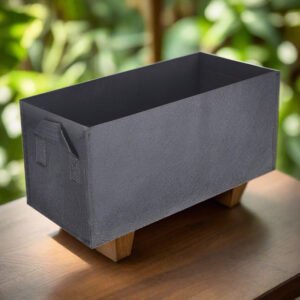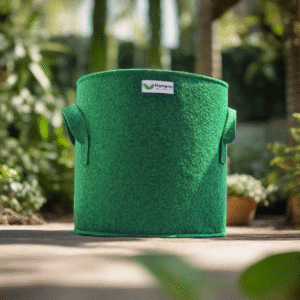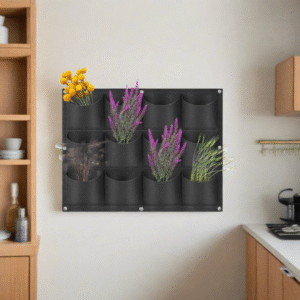No products in the cart.

How to Create a Zero-Waste Garden with Reusable Fabric Grow Bags
Gardening is slowly changing as more and more gardeners go for green and environmentally friendly ways. If you want to make your garden greener, a great option is using reusable fabric grow bags. Not only do they serve better for plant growth, but they have many ways to decrease plastic usage and now totally eliminate it to establish eco-friendly gardening. In this article, we are going to dive deep into how you can create a no-waste gardening activity using reusable fabric grow bags, considering your eco-friendly values.
What is zero-waste gardening?
Zero-waste gardening simply means the philosophy of economizing on waste in cultivation by using sustainable resources and ecology-friendly practices. This practice encourages reusable items such as fabric grow bags, composting, rainwater harvesting to ensure your gardening habits do not add to environmental pollution. It thus aspires to produce as little waste as possible and to reuse and recycle wherever possible.
With zero-waste gardening, you help reduce the carbon footprint and conserve resources while making sure harmful materials, like plastics, do not enter landfills. Benefits of Using Fabric Grow Bags for Sustainable Gardening
a) Improvement in the health of the roots
Among all, fabric grow bags are the most breathable. By nature, fabric material allows air to flow freely through the sides of the bag and allows air pruning. This process keeps the roots from tangling and makes them grow stronger and healthier, which is opposite to traditional pots, in which the roots circle and choke themselves.
b) Reusable and Eco-friendly
The reusable grow bags, such as those provided by Planteria, can be used again for a couple of seasons. Besides that, unlike plastic pots that degrade and crack over time, these bags are more durable, and hence there is less need to change them frequently, adding to the no-waste lifestyle.
c) Better Drainage:
These bags also avoid overwatering by easily allowing excess water to drain out, thus keeping the soil healthy with reduced chances of root rot.
d) Lightweight and Versatile
The grow bag made of fabric is light to carry around-be it a balcony garden or a full backyard plot. Both are appropriate to fit into any kind of garden space.
How to Choose the Right Fabric Grow Bags for Your Garden
Fabric grow bags should be chosen based on several reasons, which concern the size of the plants you are going to grow, space, and type of material. Here you can take a look at what you should consider:
Size: Judge how much space your plants are going to need. For example, herbs and small plants have good progress in 1-3 gallon bags, while vegetables, like tomatoes and peppers, require larger ones, such as 10-20 gallons.
Materials: Select materials that are of high quality and durable so they can last for more than one growth period. Handles: Some fabric grow bags come with handles that make mobility pretty easy, especially if you want to change the layout of your garden.
How to Create a Zero-Waste Garden – a Step-by-Step Guide
a) Plan Your Garden Layout
Determine where to place your fabric grow bags depending on how much sunlight the plants will require. Your garden design will have to allow for easy mobility and maintenance.
b) Prepare the Soil
Organic soil mixed with compost is highly recommended to use. The use of chemical fertilizers should be avoided because it emits harmful effects to the environment.
c) Choose Your Plants
Choose plants that will thrive in your weather zone and whose variety would work in fabric grow bags. Good candidates include tomatoes, peppers, herbs, and leafy greens. d) Install a Compost System Composting is key to zero-waste gardening. Compost food scraps, plant pruning, and organic material for nutrient-dense compost to fertilize your plants. e) Water Wisely
Save your tap water and collect rainwater with a rainwater harvesting system, since every little bit helps.
The Best Plants to Grow in Fabric Grow Bags
Fabric grow bags can literally take on an immense amount of different plants. Here are some of the best varieties:
Herbs: basil, cilantro, mint, rosemary
Vegetables: tomatoes, peppers, cucumbers, lettuce
Flowers: marigolds, petunias, zinnias
Fruits: strawberries, dwarf citrus trees








Add comment